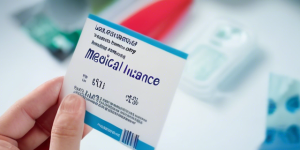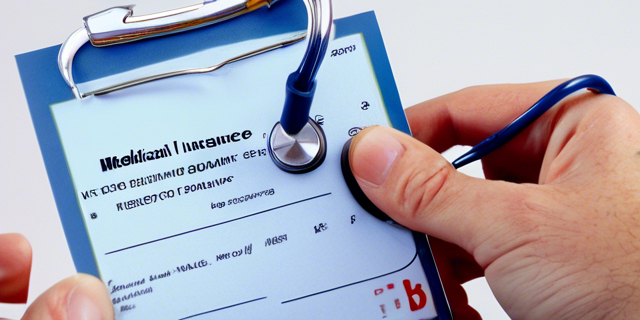Unveiling Inexpensive Medical Insurance Options 2024

Welcome to the realm of affordable healthcare, where every penny counts, and finding the right medical insurance can feel like a daunting task. In today’s fast-paced world, skyrocketing healthcare costs have become a universal concern, leaving many individuals and families grappling with the question: “How can I secure quality medical coverage without breaking the bank?”
Fear not, for this comprehensive guide will unveil the secrets to navigating the intricate world of inexpensive medical insurance. We’ll explore various options, debunk myths, and empower you with the knowledge to make informed decisions that safeguard your health and financial well-being.
The Rising Tide of Healthcare Costs
Before we delve into the solutions , let’s acknowledge the elephant in the room – the ever-increasing cost of healthcare. According to a report by the Centers for Medicare and Medicaid Services, national health expenditures in the United States have been steadily rising, reaching staggering heights. This surge in costs has left countless individuals and families straining to afford adequate medical coverage.
, let’s acknowledge the elephant in the room – the ever-increasing cost of healthcare. According to a report by the Centers for Medicare and Medicaid Services, national health expenditures in the United States have been steadily rising, reaching staggering heights. This surge in costs has left countless individuals and families straining to afford adequate medical coverage.
The Importance of Medical Insurance
While some may be tempted to forgo medical insurance altogether, let’s be clear – this decision can have dire consequences. A single unexpected medical emergency or chronic condition can easily accumulate exorbitant costs, potentially leading to financial ruin. Medical insurance serves as a vital safety net, protecting you and your loved ones from the crippling weight of hefty medical bills.
Unveiling Inexpensive Medical Insurance Options

Now, let’s dive into the heart of the matter – the various inexpensive medical insurance options available to you:
1. Employer-Sponsored Health Plans
If you’re employed, one of the most cost-effective options is to explore the health insurance plans offered by your employer. These plans often come with competitive group rates and may include contributions from your employer, making them more affordable than individual plans. Be sure to carefully review the coverage details and out-of-pocket expenses to ensure they align with your needs and budget.
2. Government-Subsidized Health Insurance Marketplaces
Thanks to the Affordable Care Act (ACA), also known as Obamacare, individuals and families can access subsidized health insurance through state or federal marketplaces. These marketplaces offer a range of plans at varying coverage levels and premiums. Depending on your income level, you may qualify for substantial subsidies or tax credits, significantly reducing the overall cost of your medical insurance.
3. High-Deductible Health Plans (HDHPs)
HDHPs, as the name suggests, come with higher deductibles but lower monthly premiums. These plans can be an attractive option for individuals who are generally healthy and don’t anticipate frequent medical expenses. By opting for a higher deductible, you trade lower monthly costs for a higher out-of-pocket expense should you require extensive medical care. However, HDHPs can be coupled with Health Savings Accounts (HSAs), allowing you to set aside pre-tax dollars to cover eligible medical expenses.
4. Short-Term Health Insurance Plans
If you find yourself in a temporary coverage gap, short-term health insurance plans can provide a stopgap solution. These plans typically offer lower premiums but also come with limitations in coverage and benefits. They can be a viable option for those facing a brief period without insurance, such as transitioning between jobs or waiting for employer-sponsored coverage to kick in.
5. Healthcare Sharing Ministries
For those with specific religious beliefs, healthcare sharing ministries can offer an alternative to traditional insurance. These faith-based organizations facilitate the sharing of medical costs among members who share similar beliefs and lifestyles. While not technically insurance, these programs can provide a more affordable option for qualifying individuals and families.
6. Medicaid and CHIP
For those with limited financial resources, government-sponsored programs like Medicaid and the Children’s Health Insurance Program (CHIP) can provide essential medical coverage at little to no cost. Eligibility criteria vary by state, but these programs aim to ensure access to healthcare for low-income individuals, families, and children.
Strategies to Minimize Healthcare Costs

In addition to exploring inexpensive medical insurance options, there are several strategies you can employ to further reduce your healthcare expenses:
- Preventive Care: Investing in preventive care, such as regular check-ups, screenings, and a healthy lifestyle, can help avoid more costly medical interventions down the line.
- Generic Medications: Whenever possible, opt for generic medications over brand-name counterparts, as they can offer significant cost savings without compromising quality.
- Comparison Shopping: Don’t shy away from comparing prices for medical services and procedures across different providers. Costs can vary substantially, and a little research can go a long way in finding affordable options.
- Negotiating Medical Bills: In some cases, you may be able to negotiate medical bills with healthcare providers, especially if you’re facing financial hardship or have a large outstanding balance.
- Telemedicine: Utilizing telemedicine services, where available, can be a cost-effective alternative to in-person visits for non-emergency medical consultations.
Navigating the Maze: Resources and Support
Exploring inexpensive medical insurance options can be a daunting task, but you don’t have to go it alone. Various resources and support systems are available to guide you through the process:
- Healthcare Navigators: Many states and organizations offer healthcare navigators or certified application counselors who can assist you in understanding and enrolling in various insurance plans, including those offered through government marketplaces.
- Online Resources: Reputable websites like HealthCare.gov and InsureKidsNow.gov provide valuable information, tools, and resources to help you navigate the complex world of healthcare coverage.
- Community Organizations: Local non-profit organizations, advocacy groups, and community centers may offer assistance in understanding and accessing affordable healthcare options in your area.
Conclusion
Securing inexpensive medical insurance is not only a financial necessity but also a fundamental step towards safeguarding your health and well-being. By exploring the various options outlined in this guide, you can find a plan that fits your unique circumstances and budget, without compromising on quality care.
Remember, your health is invaluable, and investing in affordable medical coverage is an investment in yourself and your loved ones. Embrace the journey, stay informed, and don’t hesitate to seek guidance from reliable sources. With determination and the right strategies, you can conquer the quest for inexpensive medical insurance and enjoy the peace of mind that comes with knowing you’re prepared for life’s unexpected twists and turns.
Frequently Asked Questions (FAQs)
1. What is the Affordable Care Act (ACA), and how can it help me find inexpensive medical insurance?
The Affordable Care Act, also known as Obamacare, is a federal law that aims to make healthcare more accessible and affordable for Americans. Through the ACA, individuals and families can access subsidized health insurance plans through state or federal marketplaces, based on their income levels. Depending on your financial situation, you may qualify for substantial subsidies or tax credits that can significantly reduce the cost of your medical insurance premiums.
2. Can I get medical insurance if I have a pre-existing condition?
Yes, thanks to the Affordable Care Act, insurance companies are prohibited from denying coverage or charging higher premiums based on pre-existing medical conditions. This provision ensures that individuals with pre-existing conditions have access to affordable medical insurance options without discrimination.
3. How do High-Deductible Health Plans (HDHPs) work, and are they a good option for me?
HDHPs are health insurance plans that feature lower monthly premiums but higher deductibles, meaning you’ll have to pay more out-of-pocket expenses before your insurance coverage kicks in. These plans can be a cost-effective option for individuals who are generally healthy and don’t anticipate frequent medical expenses. However, it’s important to consider your potential medical needs and budget when evaluating if an HDHP is the right choice for you.
4. What is a Health Savings Account (HSA), and how can it help with medical expenses?
An HSA is a tax-advantaged savings account that can be used in conjunction with an HDHP. Contributions to an HSA are tax-deductible, and the funds can be used to pay for qualified medical expenses, including deductibles, copays, and other out-of-pocket costs. HSAs offer a way to save and pay for medical expenses with pre-tax dollars, making them an attractive option for those enrolled in an HDHP.
5. Can I get medical insurance if I’m self-employed or a freelancer?
Yes, self-employed individuals and freelancers can access medical insurance through various channels. One option is to purchase an individual health insurance plan through the government-run marketplaces or directly from private insurers. Additionally, some professional associations or trade organizations may offer group health insurance plans for their members, which can provide more affordable coverage than individual plans. It’s important to explore all available options and compare costs, coverage, and benefits to find a plan that suits your needs and budget as a self-employed or freelance worker.

